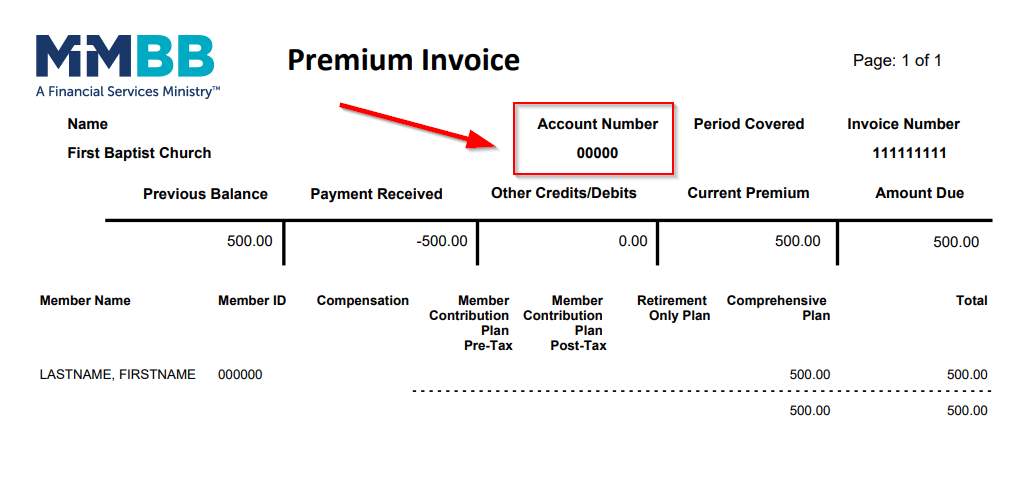The Markets (as of market close November 30, 2021)
Stocks ended November generally lower, with only the Nasdaq able to eke out a gain. The Global Dow and the Russell 2000 each lost more than 4.25%. The Dow fell 3.7% and the S&P 500 dropped 0.8%. The Nasdaq gained 0.3%.
Despite some positive economic news, global and domestic markets were sent reeling in November following reports of a new coronavirus strain. The Omicron variant, first discovered in South Africa, prompted several countries, including the United States, to impose travel restrictions. Federal Reserve Chair Jerome Powell indicated that the coronavirus variant could hinder economic recovery efforts and impact the country's response to surging inflation. Nevertheless, Powell also suggested that the central bank could end its asset purchase program a few months sooner than planned, apparently signaling confidence in the economic recovery, despite concerns over the Omicron variant. Inflation continued to rise, as supply-chain bottlenecks and labor shortages prompted price hikes at both the manufacturing and retail levels.
The Omicron variant also impacted crude oil prices, driving them to the biggest monthly loss since early 2020. Prior to news of the variant, several countries, including the United States, responded to rising oil prices by planning to release several million barrels of oil from strategic reserves. Bond prices rose in anticipation of rising interest rates, sending yields lower, with 10-year Treasury yields falling 11 basis points to close the month at 1.44%.
There were some positive economic signs in November. Industrial production rose, while sales of new and existing homes increased. More than 500,000 new jobs were added, and weekly claims for unemployment insurance fell to their lowest level since 1969.
November saw the dollar climb higher, while gold prices dropped nearly 1.0%. Prices at the pump increased, as the national average retail price for regular gasoline was $3.395 per gallon on November 22, up from the October 25 price of $3.383 per gallon.
MARKET SUMMARY
| MARKET/INDEX |
AS OF 11/30 |
PRIOR MONTH |
2020 CLOSE |
MONTHLY CHANGE |
YTD CHANGE |
| DJIA |
34,483.72 |
35,819.56 |
30,606.48 |
-3.73% |
12.67% |
| NASDAQ |
15,537.69 |
15,498.39 |
12,888.28 |
0.25% |
20.56% |
| S&P 500 |
4,567.00 |
4,605.38 |
3,756.07 |
-0.83% |
21.59% |
| RUSSELL 2000 |
2,198.91 |
2,297.19 |
1,974.86 |
-4.28% |
11.35% |
| GLOBAL DOW |
3913.00 |
4091.61 |
3,487.52 |
-4.37% |
12.20% |
| FED. FUNDS |
0.00%-0.25% |
0.00%-0.25% |
0.00%-0.25% |
0 BPS |
0 BPS |
| 10-YEAR TREASURIES |
1.44% |
1.55% |
0.91% |
-11 BPS |
53 BPS |
| US DOLLAR-DXY |
95.90 |
94.12 |
89.84 |
1.89% |
6.75% |
| CRUDE OIL-CL=F |
$66.97 |
$83.27 |
$48.52 |
-19.57% |
38.03% |
| GOLD-GC=F |
$1,771.10 |
$1,784.20 |
$1,893.10 |
-0.73% |
-6.44% |
Chart reflects price changes, not total return. Because it does not include dividends or splits, it should not be used to benchmark performance of specific investments.
Latest Economic Reports
- Employment: The pace of job gains accelerated in October, as 531,000 new jobs were added. This followed a revised September total of 312,000 new jobs. Through the first 10 months of the year, monthly job growth has averaged 582,000. The unemployment rate declined by 0.2 percentage point to 4.6% in October. The number of unemployed persons, at 7.4 million, continued to trend down (7.7 million in September). Employment has increased by 18.2 million since a recent trough in April 2020 but is down by 4.2 million, or 2.8%, from its pre-pandemic level in February 2020. In October, notable job gains occurred in leisure and hospitality (164,000), food services and drinking places (119,000), professional and business services (100,000), retail trade (35,000), transportation and warehousing (54,000), and manufacturing (60,000). Employment decreased in local government education and state government education (-43,000 and -22,000, respectively). Among the unemployed, the number of permanent job losers declined from 2.3 million in September to 2.1 million in October but is 828,000 higher than in February 2020. The number of persons not in the labor force who currently want a job was 6.0 million, unchanged from the September total. The labor force participation rate, at 61.6%, was unchanged from the September rate and has remained within a narrow range of 61.4% to 61.7% since June 2020. The employment-population ratio was 58.8% in October, up 0.1 percentage point from the previous month. This measure is up from its low of 51.3% in April 2020 but remains below the figure of 61.1% in February 2020. In October, 11.6% of employed persons teleworked because of the pandemic, a decrease of 1.6 percentage point from the prior month. In October, 3.8 million persons reported that they had been unable to work because their employer closed or lost business due to the pandemic; this is down from 5.0 million in September. Average hourly earnings rose $0.11 to $30.96 in October. Earnings have increased 4.9% since October 2020. The average work week in October was 34.7 hours, a decrease of 0.1 hour from September.
- The total number of claims for unemployment insurance fell in November. According to the latest weekly totals, as of November 13 there were 2,049,000 workers receiving unemployment insurance benefits, down from the October 16 total of 2,243,000. The unemployment rate for the week ended November 13 was 1.5%, down 0.2 percentage point from the October 16 rate of 1.7%. During the week ended November 6, Extended Benefits were available in four states/territories: Alaska, Connecticut, New Jersey, and New Mexico; 40 states reported 334,750 continued weekly claims for Pandemic Unemployment Assistance benefits (270,013 on October 9), and 41 states reported 151,556 continued claims for Pandemic Emergency Unemployment Compensation benefits (244,379 on October 9).
- FOMC/interest rates: The Federal Open Market Committee met in November. While the Committee left the federal funds target range rate at its current 0.00%-0.25%, it decided to begin tapering its asset purchases, reducing Treasury and mortgage-backed securities buybacks by $10 billion and $5 billion per month, respectively.
- GDP/budget: According to the second estimate from the Bureau of Economic Analysis, the economy accelerated at an annual rate of 2.1% in the third quarter after advancing 6.7% in the second quarter. Consumer spending, as measured by personal consumption expenditures, increased 1.7% in the third quarter after rising 12.0% in the prior quarter. The personal consumption price index (prices for consumer goods and services) rose 5.3% in the third quarter after climbing 6.5% in the second quarter.
- Excluding food and energy, the price index increased 4.5% in the third quarter compared with an increase of 6.1% in the second quarter. In the third quarter, fixed investment dipped 1.1% following a 3.3% increase in the second quarter, and residential fixed investment fell 8.3% after decreasing 11.7% in the second quarter. Exports slid 3.0% in the third quarter after increasing 7.6% in the second quarter. Imports (which are a negative in the calculation of GDP) increased 5.8% in the third quarter (7.1% in the second quarter). Overall, third-quarter GDP reflected the continued economic impact of the COVID-19 pandemic. A resurgence of COVID-19 cases resulted in new restrictions and delays in the reopening of establishments in some parts of the country. Also, government assistance payments in the form of forgivable loans to businesses, grants to state and local governments, and social benefits to households decreased.
- The Treasury budget deficit for October came in at $165.1 billion, 42.0% lower than the deficit in the same month last year. Compared to October 2020, government receipts rose 19.0% to $283.9 billion, while government expenditures decreased 14.0% to $449.0 billion. Individual income tax receipts rose 32.0% in October, while corporate tax receipts rose 72.0%. Medicare expenditures declined by 44.0% compared to October 2020, national defense expenditures dipped by 14.0%, and spending on agriculture dropped 62.0%.
- Inflation/consumer spending: Personal income increased 0.5% in October after falling 1.0% in September. Disposable (after-tax) personal income rose 0.3% in October after decreasing 1.3% the previous month. The increase in personal income in October primarily reflected increases in wages (0.8%), income from assets (0.9%), and dividend income (1.2%). Consumer spending rose 1.3% in October following a 0.6% increase in September. Consumer prices continued to rise in October, increasing 0.6%, after climbing 0.4% in September. Excluding food and energy, consumer prices advanced 0.4% in October. Prices have risen 5.0% since October 2020, and 4.1% excluding food and energy.
- Prices at the consumer level continued to advance in October, increasing 0.9% following a 0.4% rise in September. Prices for consumer goods and services have increased 6.2% since October 2020. Excluding food and energy, consumer prices rose 0.6% in October (0.2% in September) and 4.6% since October 2020. Prices for food rose 0.9% in October, the same increase as in September. Energy prices rose 4.8% in October (1.3% in September), while gasoline prices jumped 6.1% (1.2% in September) and fuel oil prices climbed 12.3% (3.9% in September). Prices for new vehicles and used cars and trucks rose 1.4% and 2.5%, respectively, in October.
- Producer prices continued to climb in October, increasing 0.6% after rising 0.5% in September. Producer prices increased 8.6% for the 12 months ended in October. Prices for services in October rose 0.2%, unchanged from the previous month, while prices for goods moved up 1.2% (1.3% in September). Producer prices less foods, energy, and trade services advanced 0.4% in October (0.1% in September) and have risen 6.2% since October 2020. Energy prices jumped 4.8% in October, with one-third of that advance attributable to a 6.7% jump in gasoline prices. The October increase in producer prices for services was driven by a 0.4% climb in trade services (trade services measure the change in margins received by wholesalers and retailers).
- Housing: Existing home sales rose 0.8% in October after advancing 7.0% in September. Nevertheless, existing home sales have dropped 5.8% from a year ago. The median existing-home price was $353,900 in October ($352,800 in September), up 13.1% from October 2020 ($313,000). Total housing inventory at the end of October dropped 0.8% from September's supply and is down 12.0% from one year ago. In October, unsold inventory sat at a 2.4-month supply at the present sales pace (2.5-month supply in September). Sales of existing single-family homes also increased in October, climbing 1.3% after climbing 7.7% in September. Year over year, sales of existing single-family homes are down 5.8%.
- New single-family home sales increased in October, advancing 0.4% after increasing 7.0% in September (revised). Despite the recent monthly increase, sales of new single-family homes have decreased 23.1% from October 2020. The median sales price of new single-family houses sold in October was $407,700 ($404,700 in September). The October average sales price was $477,800 ($457,200 in September). The inventory of new single-family homes for sale in October represents a supply of 6.3 months at the current sales pace, up from the September estimate of 6.1 months.
- Manufacturing: Industrial production rose 1.6% in October after falling 1.3% in September. About half of the gain in October reflected a recovery from the effects of Hurricane Ida. Manufacturing output increased 1.2% in October following a 0.7% decrease the previous month. The output of utilities rose 1.2% (3.7% in September), and mining output stepped up 4.1% following a 2.3% dip in September. Overall, total industrial production in October was 5.1% above its year-earlier level and at its highest reading since December 2019.
- New orders for durable goods decreased $1.2 billion, or 0.5%, in October after falling 0.4% in September. Transportation equipment, down three of the last four months, drove the October decline, falling $2.0 billion, or 2.6%. Excluding transportation, new orders rose 0.5% in October. New orders for aircraft and parts were particularly weak, with defense aircraft and parts falling 21.8%, while nondefense aircraft dipped 14.5%. Otherwise, shipments (1.5%), unfilled orders (0.2%), and inventories (0.6%) advanced in October. New orders for nondefense capital goods decreased 1.2% in October after falling 4.4% the previous month.
- Imports and exports: October import prices rose 1.2% following a 0.4% advance in September. The October increase was the largest monthly advance since a 1.3% rise in May. Import prices rose 10.7% over the 12 months ended in October (9.2% for the 12 months ended in September), the largest year-over-year increase since June 2021. Import fuel prices jumped 8.6% in October after advancing 3.9% in September. Import fuel prices rose 86.7% over the past year. Both the 86.7% advance in petroleum prices and a 134.0% increase in natural gas prices factored into the 12-month rise in import fuel prices in October. Export prices advanced 1.5% in October after edging up 0.1% in September. The October increase was the largest one-month increase since a 2.3% rise in May 2021. For the year ended in October, export prices rose 18.0%, the largest 12-month increase since the series was first published in September 1983.
- The international trade in goods advance report showed the October deficit decreased by $14.1 billion, or 14.6%, to $89.2 billion. Exports increased $15.3 billion, or 10.7%, while imports rose $1.1 billion, or 0.5%. For the 12 months ended in October, exports have risen 25.5%, while imports have increased 16.3%.
- The information on international trade in goods and services, out November 4, was for September and showed that the goods and services trade deficit increased by 11.2% to $80.9 billion. September exports dipped 3.0%, while imports advanced 0.6%. Year to date, the goods and services deficit increased $158.7 billion, or 33.1%, from the same period in 2020. Exports increased $274.1 billion, or 17.4%. Imports increased $432.8 billion, or 21.1%.
- International markets: Fears that the economic recovery might be slowed by the spread of the Omicron coronavirus variant impacted global markets. Several countries imposed travel bans and other restrictions in response to the potentially more contagious variant. A new government took control in Germany, with Social Democrat leader Olaf Scholz succeeding Angela Merkel as chancellor. Expectations for higher U.S. interest rates pulled the Japanese yen to a three-year low versus the dollar. Relations between the United States and China remained tense over the status of Taiwan and trade issues. The Chinese real estate sector remained troubled, as high-profile developers tried to avert default on obligations to creditors. In the markets for November, the STOXX Europe 600 Index dropped 3.0%; the United Kingdom's FTSE fell 2.8%; Japan's Nikkei 225 Index dipped 5.8%; and China's Shanghai Composite Index rose 1.7%.
- Consumer confidence: According to a report from The Conference Board, consumer confidence decreased in November for the fourth time in the last five months. The Consumer Confidence Index® stands at 109.5 in November, down from 111.6 in October. The Present Situation Index, based on consumers' assessment of current business and labor market conditions, fell to 142.5 in November from 145.5 the previous month. The Expectations Index, based on consumers' short-term outlook for income, business, and labor market conditions, registered 87.6 in November, down from 89.0 in October.
Eye on the Month Ahead
December will not only close 2021 but will likely be a precursor to what lies ahead in 2022. The Federal Open Market Committee meets mid-month and is expected to address rising inflationary pressures. The FOMC could accelerate the reduction of bond purchases and possibly consider raising interest rates sometime in 2022. Job growth accelerated in September and October, adding nearly 850,000 new jobs. November's figure is projected to be in the range of 350,000 new jobs added. Industrial production is expected to expand in November despite being hampered by supply bottlenecks and labor shortages.
Data sources: Economic: Based on data from U.S. Bureau of Labor Statistics (unemployment, inflation); U.S. Department of Commerce (GDP, corporate profits, retail sales, housing); S&P/Case-Shiller 20-City Composite Index (home prices); Institute for Supply Management (manufacturing/services). Performance: Based on data reported in WSJ Market Data Center (indexes); U.S. Treasury (Treasury yields); U.S. Energy Information Administration/Bloomberg.com Market Data (oil spot price, WTI, Cushing, OK); http://www.goldprice.org (spot gold/silver); Oanda/FX Street (currency exchange rates). News items are based on reports from multiple commonly available international news sources (i.e. wire services) and are independently verified when necessary with secondary sources such as government agencies, corporate press releases, or trade organizations. All information is based on sources deemed reliable, but no warranty or guarantee is made as to its accuracy or completeness. Neither the information nor any opinion expressed herein constitutes a solicitation for the purchase or sale of any securities, and should not be relied on as financial advice. Past performance is no guarantee of future results. All investing involves risk, including the potential loss of principal, and there can be no guarantee that any investing strategy will be successful.
The Dow Jones Industrial Average (DJIA) is a price-weighted index composed of 30 widely traded blue-chip U.S. common stocks. The S&P 500 is a market-cap weighted index composed of the common stocks of 500 largest, publicly traded companies in leading industries of the U.S. economy. The NASDAQ Composite Index is a market-value weighted index of all common stocks listed on the NASDAQ stock exchange. The Russell 2000 is a market-cap weighted index composed of 2,000 U.S. small-cap common stocks. The Global Dow is an equally weighted index of 150 widely traded blue-chip common stocks worldwide. The U.S. Dollar Index is a geometrically weighted index of the value of the U.S. dollar relative to six foreign currencies. Market indices listed are unmanaged and are not available for direct investment.
IMPORTANT DISCLOSURES
Broadridge Investor Communication Solutions, Inc. does not provide investment, tax, legal, or retirement advice or recommendations. The information presented here is not specific to any individual’s personal circumstances.
To the extent that this material concerns tax matters, it is not intended or written to be used, and cannot be used, by a taxpayer for the purpose of avoiding penalties that may be imposed by law. Each taxpayer should seek independent advice from a tax professional based on his or her individual circumstances.
These materials are provided for general information and educational purposes based upon publicly available information from sources believed to be reliable — we cannot assure the accuracy or completeness of these materials. The information in these materials may change at any time and without notice.








